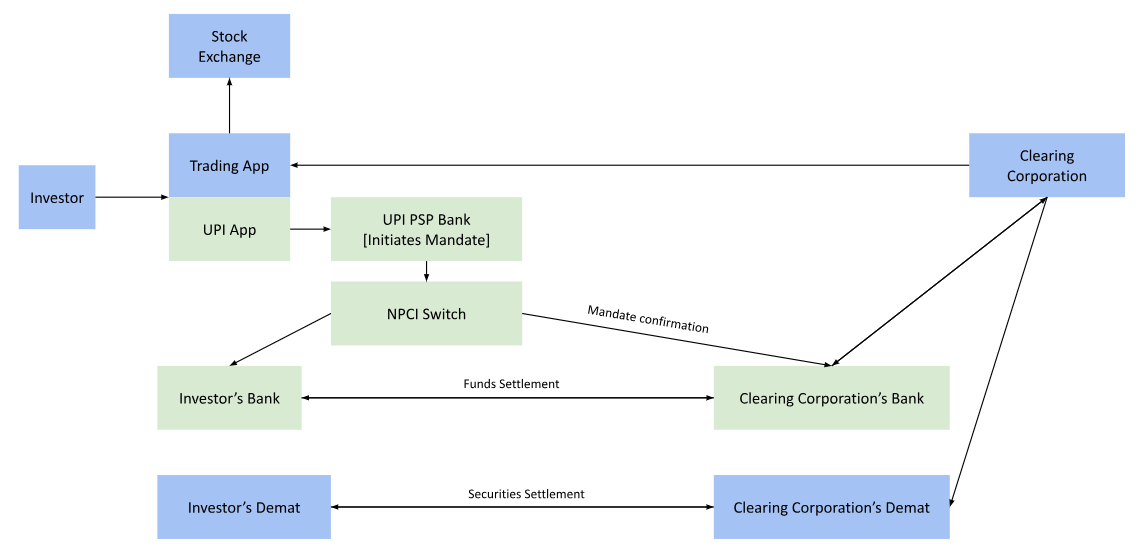January 3, 2024
Trading stocks with the new amount block framework
Guest Author | Equity Investing
SEBI has introduced the amount block framework for investing in the secondary markets starting January 1, 2024. This system functions similarly to blocking funds for an IPO application, where your funds are deducted only if you are bound to receive the shares.
How can an investor block an amount to fund their trades?
Investors can initiate a request to block funds in their bank account through the trading app they use. Once the request is placed on the trading app, the investor has to accept the UPI mandate confirming the block. Banks then relay this confirmation to the clearing corporation, which, in turn, confirms to the stockbroker that the investor can trade.
Here is a diagram to visualize the transaction flow:

Interest on the blocked amount
While the funds remain in the investor’s account, the block ensures that the money cannot be used for any other purpose. The funds are directly deducted from the investor’s bank account by the clearing corporation of the stock exchange when one invests. The blocked funds also earn interest in the savings account, just like funds blocked for IPOs.
However, there is no interest benefit if one invests the entire block amount on the same day since funds are debited by 8 pm. The bank pays interest if the funds stay in your account overnight.
Investors can set a preference.
Once the framework is live for the public, investors can choose between the
-
- Present pooling method – This is the existing flow where stockbrokers collect and send funds to the clearing corporation.
- Amount block method – This is the new framework where investors place a block and are subsequently debited by the clearing corporation.
Investors can switch between the two methods by placing a request with their stockbroker, but they cannot use both methods simultaneously.
Why is the framework not yet live for the public?
Although the UPI block framework has been launched, stockbrokers need to implement the required system changes, as this deviates from the current funds module. A period of development, along with testing the systems with a closed user group, will precede the public launch.
At present, this appears to be a couple of months away.
This guest post is by Mohit Mehra. Mohit splits his time between Zerodha & Rainmatter, sharing his experiences on this blog.


When will Zerodha allow it’s clients to trade with the new amount block framework?
Not sure if I can comment on this, will keep you posted as and when this happens.
Is zerodha going to lose out on interest income if they implement it. Why would zerodha implement it and cut their free revenue?
Yes, not just Zerodha but holds true for the industry.